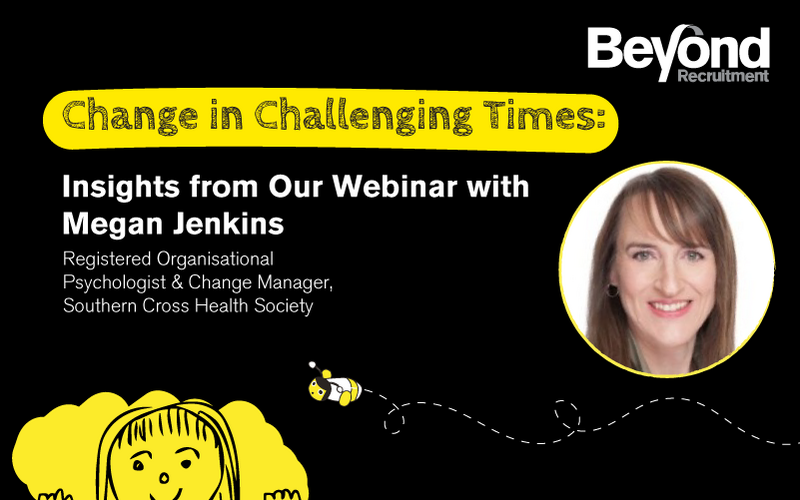Uncertainty has spread to all corners of society over the past several months as industries transform, businesses restructure and people are faced with unplanned career transitions. Keeping their teams engaged and productive while managing the future of the business is a major challenge for leaders – one that can be addressed through the way they handle change.
In our recent webinar, Southern Cross Health Society Change Manager and Registered Organisational Psychologist, Megan Jenkins, explored how to develop change resilience, and provided practical strategies for successfully guiding people through change and aligning change leadership.
As we continue to experience a period of unpredictability, here is a summary of the key insights from the webinar to help you navigate personal and organisational change.
The Emotional Change Curve
Created by psychiatrist Elisabeth Kubler-Ross, the Change Curve is a popular model that is widely used in business and change management to understand how people react to change and ensure they have the support and guidance they need.
While there are common stages that most people go through when dealing with a transition, it’s important to note that the model is not linear and it’s natural for people to oscillate between the different states from day-to-day. The stages are shock, denial, acceptance, depression, experimentation, decision and engagement, and an individual’s progression through them is often impacted by numerous factors outside of the core change.

Building Individual Resilience
Resilience has become vital for withstanding the pace and intensity of today’s business environment, and never more so than when dealing with significant change. By cultivating a specific set of behaviours and actions, you can improve the way you respond to transitions and learn to be more resilient.
The following factors will help you move from change to resilience.

A Framework for Change
Research shows that organisations that do change management well are six times more likely to meet project outcomes on time and within budget, which is why it’s important to apply the concepts of change a curve and resilience into a model you can use when leading teams.
The Prosci ADKAR (Awareness, Desire, Knowledge Ability, Reinforcement) framework reveals how you can’t just launch into change – you need to first lay the groundwork of understanding why the change is necessary and what you need to do to facilitate it. This framework can be applied to all types of change – the key is to scale it for the particular nuances of the transition and the needs of the organisation.

Leading Through Change
When it comes to change leadership and keeping people engaged, there is no “one size fits all” approach. The greatest tool you have is knowing your people – you are their leader and no one else understands them the way you do.
Remember that you don’t have to have all the solutions. Effectively leading people through change is about being flexible and empathetic in your approach in order to provide people with the support they need depending on where they are at on the emotional change curve (and prioritising self care to ensure you can continue helping others!).
There are five key competencies that leaders can use to help people navigate change. They are:

Find Out More
This is just a glimpse of what Megan Jenkins covered in the webinar – we encourage you to click below and view the recording and presentation slides to get a full picture of her insights on this pertinent topic.

If you would like to discuss any of these points or find out how we can support you and your business during this time, please don’t hesitate to reach out.





